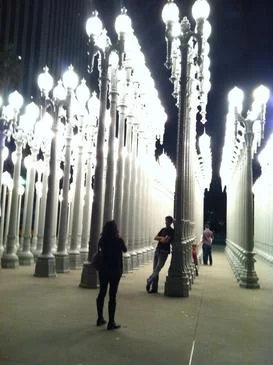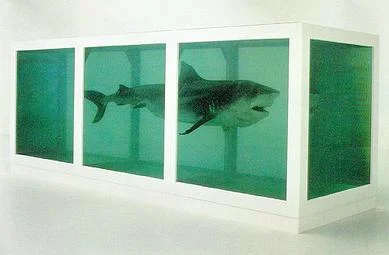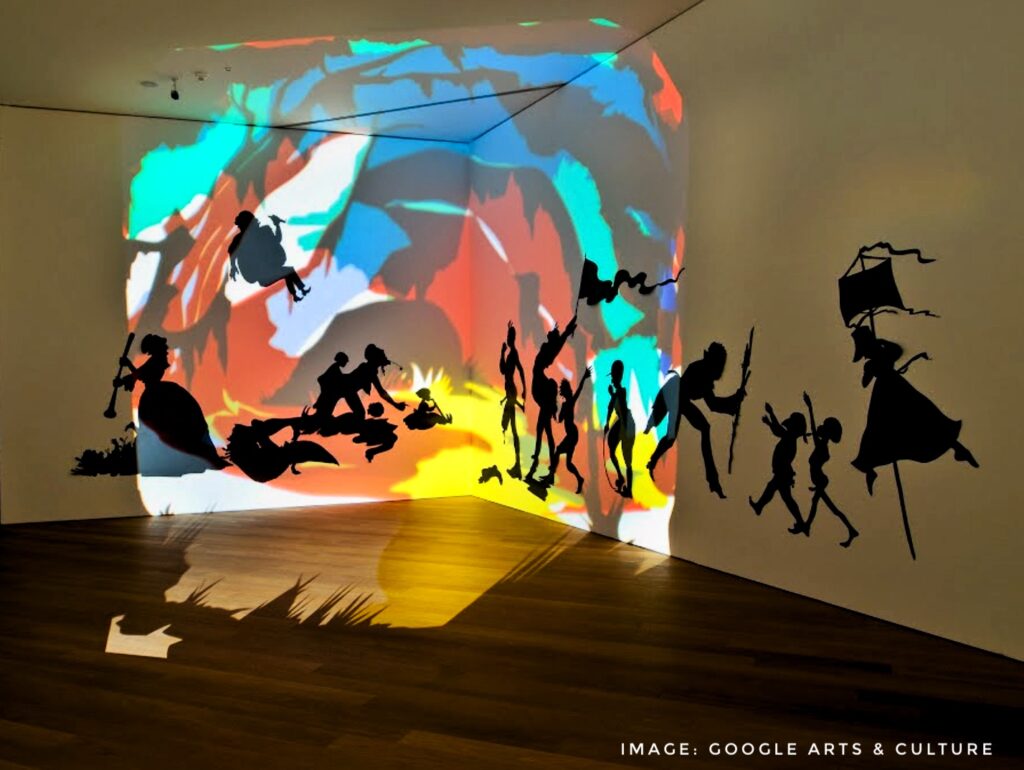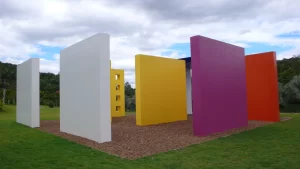What type of art was created during the Contemporary art movement?
Paintings, digital art, design, fashion, literature, graffiti, architecture, decor, and installations were artworks made during the Contemporary art movement. The Contemporary art movement is ongoing, so more artworks and experiments are yet to be seen.
Contemporary art was created and popular during which years?
The Contemporary art movement began in the late 20th and spans to the present day.
Where was Contemporary art made and popularised?
Contemporary art is ubiquitous despite borders and sectors. This is the “art of today” all around the world
Who are some famous Contemporary artists and artworks?
Something Split and New by Njideka Akunyili Crosby
Balloon Dog by Jeff Koons
Cloud Gate by Anish Kapoor
Top 10 Artworks of the Contemporary Art Movement
The Contemporary Art movement, marked by its diversity and departure from traditional norms, has produced iconic works that challenge, question, and captivate audiences worldwide.
Something Split and New by Njideka Akunyili Crosby
A Tapestry of Identity

Njideka Akunyili Crosby’s “Something Split and New” serves as a contemporary tapestry, weaving together themes of identity and a hybrid culture. Akunyili Crosby has a deeply personal connection to the artwork, which reflects her Nigerian heritage and experiences as an immigrant. The piece almost has hints of a collage artwork which gives it that “patchwork” feel alluding to the composition of her native and immigrant experiences.
Balloon Dog by Jeff Koons
The Playfulness of Monumentality

Jeff Koons’s “Balloon Dog,” a colossal sculpture of reflective stainless steel, is a testament to the playfulness inherent in contemporary art. Koons was fascinated by the ephemeral nature of balloon animals and tried to immortalise this transient form on a monumental scale. The juxtaposition of the mundane and the monumental challenges traditional notions of sculpture, transforming a simple inflatable balloon into a symbol of joy and extravagance.
Cloud Gate by Anish Kapoor
Reflecting the Urban Skyline

Anish Kapoor’s “Cloud Gate,” affectionately known as “The Bean,” stands as an iconic symbol of public art. Kapoor found inspiration in the urban landscape, with the sculpture reflecting and distorting the surrounding skyline. The seamless, mirrored surface creates an interactive experience for viewers, calling them to become a part of the artwork. “Cloud Gate” becomes a contemporary urban oasis, a reflection of both the city and those who inhabit it.
Urban Light by Chris Burden
Illuminating Collective Memory

Chris Burden’s “Urban Light” transcends traditional boundaries, transforming vintage street lamps into a conceptual masterpiece. Burden’s installation is a detailed arrangement of 202 old, restored lamps. This piece can be categorised as both, Conceptualist and Contemporary, depending on the perspective you choose. The installation not only serves as a symbol of nostalgia for bygone eras but also illuminates collective memory. “Urban Light” becomes a contemporary monument, merging aesthetics with a sense of shared history in the heart of Los Angeles.
The Physical Impossibility of Death in the Mind of Someone Living by Damien Hirst (1991)
A Shark in Suspense

Damien Hirst’s “The Physical Impossibility of Death in the Mind of Someone Living” is a contemporary marvel that challenges perceptions of life and death. Hirst was notorious for his provocative works, suspended a real shark in formaldehyde to discover the intersection of mortality and art. At first sight, seeing a real shark looking straight at the viewer can be quite shocking. Perhaps this is a purposeful attempt the artist makes to give the viewer the feeling of alarm that death can evoke.
Darkytown Rebellion by Kara Walker (2001)
Silhouettes of Social Commentary

Kara Walker’s “Darkytown Rebellion” uses the art of silhouettes to create a powerful commentary on race and history. Walker’s work highlights the skirmishes in the South, using stark black cutouts to narrate the state of affairs in the past. The silhouettes are initially charming but gradually unravel a darker history. It challenges viewers to confront uncomfortable truths about the legacy of slavery and racism in contemporary society.
The Light Inside by James Turrell (1999)
Immersive Illumination

James Turrell’s “The Light Inside” reveals Turrell’s fascination with perceptual experience. The Skyspace installation uses changing light colours to give viewers an immersive experience to create a visual symphony. The electric blue world and neon shadows make viewers feel that they can almost touch the light. The light of this installation evokes a sense of the “light” within viewers.
Wall Drawing N.804 by Sol LeWitt (1996)
Conceptual Geometry on a Grand Scale

Sol LeWitt’s “Wall Drawing N.804” is a Chevron delight. LeWitt was a pioneer of conceptual art and provided instructions for the mural, which was executed by other artists. The artwork becomes a collaborative endeavour, blurring the lines between authorship and execution. “Wall Drawing N.804” embodies LeWitt’s unique execution using “teamwork” challenge the conventional definition of artist and producer.
Wirbelwerk by Olafur Eliasson
A Whirlwind of Art and Nature

Olafur Eliasson’s “Wirbelwerk” is a contemporary homage to art’s connection to nature and natural forces. Eliasson apparently had a fascination with weather patterns, as the installation generates a whirlwind of air currents within an enclosed space. The immersive experience becomes a metaphor for the dynamic interplay between human intervention and the inherent forces of the natural world, causing viewers to engage with the artwork on both intellectual and sensory levels.
Invenção da cor, Penetrável Magic square #5, De luxe by Hélio Oiticica (1977)
Interactive Color Explorations

Hélio Oiticica’s “Invenção da cor, Penetrável Magic square #5, De luxe” invites viewers to step inside a vivid realm of colour and interaction. Oiticica was a key figure in the Brazilian Neo-Concrete movement. He sought to break down the boundaries between art and life. The penetrable sculpture becomes a sensory experience, as participants immerse themselves in a kaleidoscopic maze. Oiticica’s work represents a contemporary embrace of experiential art, by treating the spectator and participant as one.
The Contemporary Art movement offers glimpses into the diverse, innovative, and often challenging expressions of artists who define the contemporary landscape. From the conceptual brilliance of Jeff Koons to the immersive experiences crafted by Olafur Eliasson, each artwork becomes a narrative of its own time. As these masterpieces continue to captivate audiences, they reinforce the dynamic nature of artistic expression in the present moment.
*Images from Wiki Commons







0 Comments